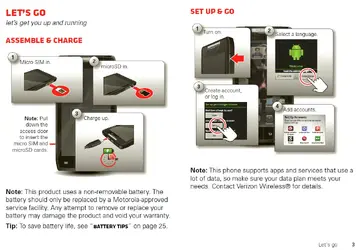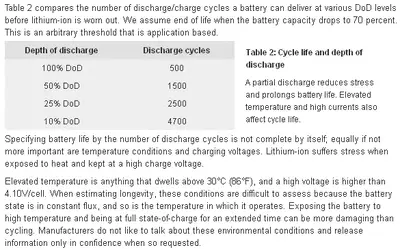We just going to have to agree to disagree. Being an amateur radio operator for almost 20yrs its a must that you learn how to take care of your batteries because they can run you in the hundreds of dollars to replace. The oldest battery that i got that is still working strong is one for my standard HT. C188A 2 meter radio... 5 plus years on that battery. The oldest smartphone battery i got is the samsung omnia and the palm treo. battery still going strong in both. In between i had the incredible and the thunderbolt. Both batteries are still good and working the way they should. Always did the same with them all.
Im not trying to prove anybody wrong or debate about batteries. Just giving my experience with the batteries that I have had and how i have maintained them and it has worked for me. I have never tried what you are advising so i cant tell you if you are right or wrong. I do know in my experience using a good and not a defective battery those steps are not necessary for me. And I stress me. And lets face it. Out of a million phones you bound to have some with defective batteries. And if thats the case then those steps may help me.
Actually were not far apart in our experience or beliefs. I have several rigs, including a Kenwood R & T-599D, a Lafayette HA-410, two Lafayette DynaCom-40 portables, several Motorola HT-750 portables, a Golden Eagle, a few other D-104s, counters, VFOs and lots more, and have been QSOing my fair share for over 30 years.
As for the method of charging described, it's not the battery that the charging method I describe is for, so much as it's for the metering system. For the most part the phone takes care of the battery under normal (dare I say typical) use.
As for the batteries you describe having cared for properly and still going strong after five years, I have no doubt. But these newer Lithium Ion Polymer Pouch batteries are a different chemistry and have very different charging and discharging profiles than Lead-Acid, Nickel-Cadmium, Nickel-Metal Hydride, and even the Lithium Ion batteries of only a couple years ago.
The biggest problems for these LIPO Pouch batteries are first that they exhibit very unusual, nearly flat voltage curves through a large portion of their discharge cycle, which makes it very difficult for the meter to give a useful indication of where in the charge/discharge cycle they are, except for during the top and bottom 20% portions where the curve is significantly more pronounced. So from 80% to 20%, most of the charge level indication is a calculated guess, albeit one that is based on the references it obtains through reaching a 100% charge level followed by a 15% discharge level. Without being "trained" with those reference points (which need to be adjusted as the battery ages and is charged and discharged repeatedly), the meter begins to provide false level readings, and they can be dramatically off-base.
Second, they also have significantly shorter life even if not used, to where they will only hold about 70% of original capacity simply due to age of even just three years or less depending on how they were stored and maintained (what charge level and temperature) while in storage. At 70% capacity, the phone manufacturer considers it to have reached the end of useful life. And to add to that, if the user either charges to 100% as a routine, and if they use it from full to empty as a routine, they can expect from 300-500 full cycles before the battery no longer holds more than 70% of rated capacity.
By contrast if the user typically charges more frequently and averages between 50% to 75% use of charge max before partially charging again, they can see from 1,500 to as much as 2,500 cycles out of the same battery. In other words, these batteries prefer NOT to be charged to 100%, NOT to be left at full charge for long periods of time, amd NOT to be charged for long charge cycles, but instead to be charged more frequently and for shorter charge periods such as during the commute to and from school/work, while at the computer, at the coffee shop, etc., sort of like adding $20 or $30 of gas to your car's tank every so often rather than running it dry and then filling it to the gas cap.
Next, the rate of charge influences it's life - charge at a faster rate and it lasts less cycles. Also, when you rapid charge them, they charge to 80% more quickly, but then take longer to reach 100%, making rapid charging only effective if you need a quick boost to 80% or less.
Finally, they don't like to be kept at a full charge for long as they suffer stress which reduces their lifespan, they can not be discharged below about 2.7 - 2.5 volts or they shut down permanently, and they can not withstand constant charging - even if only a trickle without risking catastrophic failure. In other words, what may be 100% correct for certain earlier battery types and may be virtually harmless to those older chemistries, is not only wrong for LIPO Pouch batteries, but could result in bodily harm and more.
There are lots of other peculiarities with these new high density power packs, but those are the most obvious and most relevant to this discussion and to the myriad of problems owners of phones with these batteries most often suffer.
I'm also not here to prove anyBODY wrong, but to point out the very different batteries in these phones and help everyone to know that old rules don't apply here.
Sent from my DROID RAZR using Tapatalk with speech to text translation. Please excuse any minor grammatical/punctuation/spelling errors.






